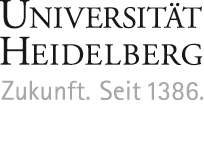Chloroplast protein import — unravelling mysteries of intracellular transport
9 April 2008
Cover story of "Structure", the renowned journal for structural biology by the "Cell" group — this work was carried out at the Heidelberg University Biochemistry Center, structures department, Prof. Dr. Irmgard Sinning

| |
|
On the cover: Plant cells have unique organelles, chloroplasts, which conduct photosynthesis. The chloroplast structure is represented schematically with part of its top cut off, allowing the inside of the chloroplast to be seen. The inner view shows the thylakoid stacks in which photosynthesis takes place. The majority of chloroplast proteins are encoded in the cell nucleus, and chloroplast biogenesis and function thus depend on protein import. Translocation of proteins across the outer chloroplast membranes requires the activity of translocon complexes (Toc) containing a number of GTPase components involved in import regulation. The crystallographic 3D structure of dimeric Toc34 from Pisum sativum, the pea plant (foreground), is shown in ribbon representation (background). Although dimerization-dependent regulation of catalysis was previously suggested, comparison of GDP and GMPPNP bound Toc33/34 by Koenig et al. (pp. 585–596) now provides evidence for a different mode of regulation not linked to canonical switch movement.
|
Cells require a variety of transport mechanisms for their survival: metabolic products need to be taken up or excreted. Inside the cell, too, there is briskly traffic, for example into and out of the cell nucleus. Aside from metabolic products, proteins — for example enzymes- need to be transported inside the cell. In doing so, they cross biomembranes. Researchers at the Heidelberg University Biochemistry Center now studied the chloroplast, the place in the plant cell in which photosynthesis takes place.
The work presented this month in "Structure" delivers an important piece for the understanding of intracellular transport. Using structural biology and biochemistry, the researchers studied the receptor of protein import, the site contacted by proteins for entry into the chloroplast. The work investigates which interactions are required to govern import. The protein structure of the receptor has been determined, and on the basis of this atomic model hypotheses for protein recognition and for the activation of transport are given. This sets the stage for future research on a central phenomenon for cell survival.
The work is published as cover story in the April, 9th, issue of "Structure", the renowned journal for structural biology by the "Cell" group (1). A review on the subject was published by the "Cell" group in January by the same research team (2).
The work was carried out at the Heidelberg University Biochemistry Center, structures, Prof. Dr. Irmgard Sinning. At the BZH, several research groups focus on protein transport (Prof. Sinning, Prof. Hurt, Prof. Wieland, Prof. Nickel, http://www.uni-heidelberg.de/zentral/bzh/; please see SFB 638).
The work is a collaboration with Dr. Karsten Rippe, BIOQUANT (http://malone.bioquant.uni-heidelberg.de/; http://malone.bioquant.uni-heidelberg.de/people/rippe/index-rippe.html), and Prof. Dr. Enrico Schleiff, Cluster of Excellence Frankfurt (CEF; http://www.cef-mc.de/; http://www.uni-frankfurt.de/fb/fb15/institute/inst-3-mol-biowiss/AK-Schleiff/index.html).
Enquiries to:
Dr. Ivo Tews
Heidelberg University Biochemistry Center BZH
Structures
Im Neuenheimer Feld 328, 69120 Heidelberg
Tel. 06221 544785, Fax 544790
ivo.tews@bzh.uni-heidelberg.de
http://www.bzh.uni-heidelberg.de/tews/
Dr. Michael Schwarz
Pressesprecher der Universität Heidelberg
Tel. 06221 542310, Fax 542317
michael.schwarz@rektorat.uni-heidelberg.de
http://www.uni-heidelberg.de/presse
Irene Thewalt
Tel. 06221 542310, Fax 542317
presse@rektorat.uni-heidelberg.de
The work presented this month in "Structure" delivers an important piece for the understanding of intracellular transport. Using structural biology and biochemistry, the researchers studied the receptor of protein import, the site contacted by proteins for entry into the chloroplast. The work investigates which interactions are required to govern import. The protein structure of the receptor has been determined, and on the basis of this atomic model hypotheses for protein recognition and for the activation of transport are given. This sets the stage for future research on a central phenomenon for cell survival.
The work is published as cover story in the April, 9th, issue of "Structure", the renowned journal for structural biology by the "Cell" group (1). A review on the subject was published by the "Cell" group in January by the same research team (2).
The work was carried out at the Heidelberg University Biochemistry Center, structures, Prof. Dr. Irmgard Sinning. At the BZH, several research groups focus on protein transport (Prof. Sinning, Prof. Hurt, Prof. Wieland, Prof. Nickel, http://www.uni-heidelberg.de/zentral/bzh/; please see SFB 638).
The work is a collaboration with Dr. Karsten Rippe, BIOQUANT (http://malone.bioquant.uni-heidelberg.de/; http://malone.bioquant.uni-heidelberg.de/people/rippe/index-rippe.html), and Prof. Dr. Enrico Schleiff, Cluster of Excellence Frankfurt (CEF; http://www.cef-mc.de/; http://www.uni-frankfurt.de/fb/fb15/institute/inst-3-mol-biowiss/AK-Schleiff/index.html).
- Koenig, P., Oreb, M., Höfle, A., Kaltofen, S., Rippe, K., Sinning, I., Schleiff, E., and Tews, I. (2008) The GTPase cycle of the chloroplast import receptors Toc33/Toc34 – Implications from monomeric and dimeric structures, Structure 16
- Oreb, M., Tews, I., and Schleiff, E. (2008) Policing Tic 'n' Toc, the doorway to chloroplasts, Trends Cell Biol 18, 19-27.
Enquiries to:
Dr. Ivo Tews
Heidelberg University Biochemistry Center BZH
Structures
Im Neuenheimer Feld 328, 69120 Heidelberg
Tel. 06221 544785, Fax 544790
ivo.tews@bzh.uni-heidelberg.de
http://www.bzh.uni-heidelberg.de/tews/
Dr. Michael Schwarz
Pressesprecher der Universität Heidelberg
Tel. 06221 542310, Fax 542317
michael.schwarz@rektorat.uni-heidelberg.de
http://www.uni-heidelberg.de/presse
Irene Thewalt
Tel. 06221 542310, Fax 542317
presse@rektorat.uni-heidelberg.de
Editor:
Email


